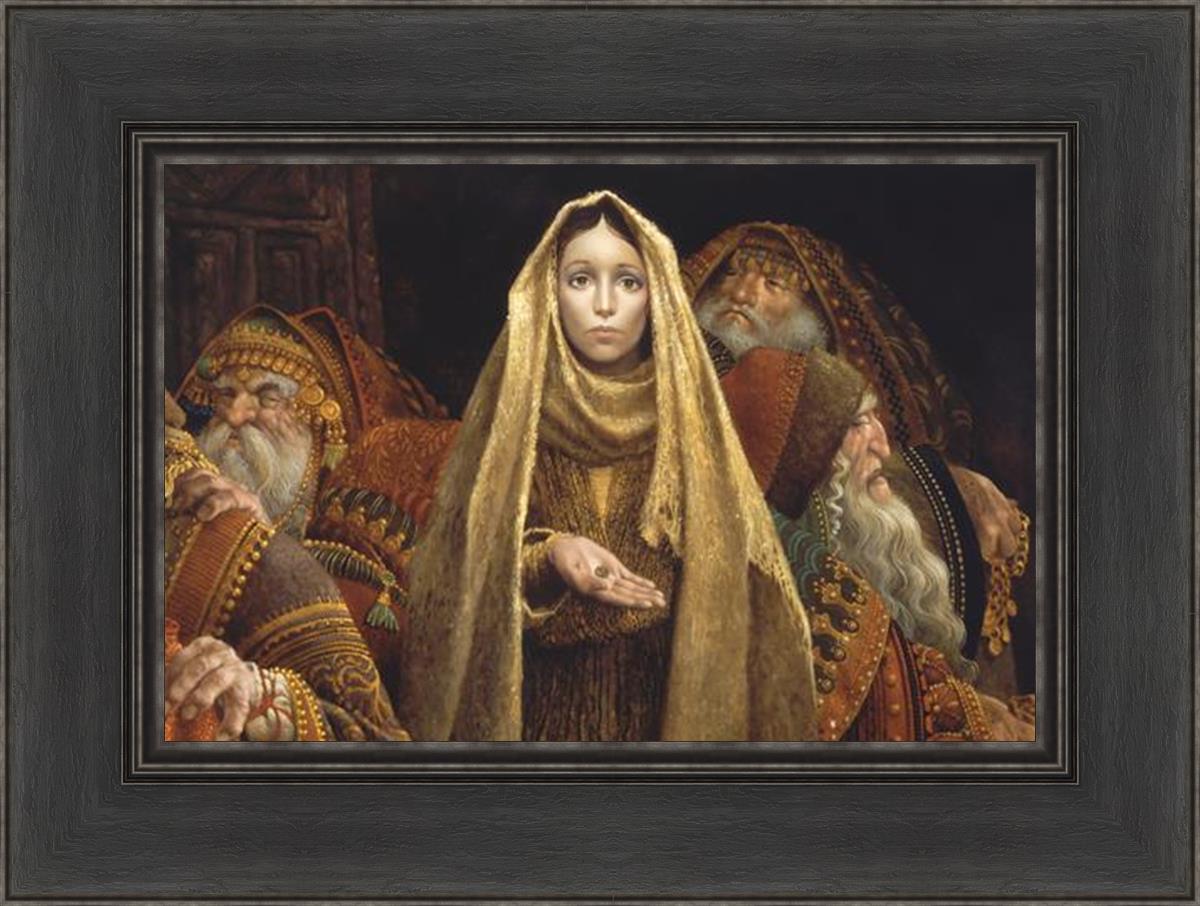The Widow's Mite Unlimited Canvas
The Widow's Mite Unlimited Canvas
SKU:JC1018729
Story Behind the Art
Story Behind the Art
The parable of the Widow’s Mite is not a story of money, but of piety. "It's about what we are willing to give of ourselves," said artist James Christensen of his best known painting.
Christensen's The Widow’s Mite uses striking light and dark to symbolize spiritual and worldly power. The poor widow, who gave all she had, glows with an inner light. Even her ragged clothing is luminescent. By contrast, the rich men in their expensive robes fade into the shadows behind this woman's radiance.
An element that made this work so unique was Christensen’s choice to depict the widow as a young woman. It was the custom of the time for a widow to marry one of her husband’s brothers or return to her own family. If neither of these occurred, a woman had few options for supporting herself or her family. If a young woman remained alone, she would likely be impoverished.
Michelangelo also influenced this choice. Upon completion of his work the Pieta, a sculpture of the crucified Jesus laying upon his mother’s lap, Michelangelo was criticized for his depiction of Mary. Though she was Christ’s mother, and therefore older, she appears younger than her son. His response was that virtue and goodness keep one beautiful. Christensen was intrigued by the idea that her righteousness could be revealed by her youth.
And he looked up, and saw the rich men casting their gifts into the treasury. And he also saw a certain poor widow casting in thither two mites. And he said, Of a truth I say unto you, that this poor widow hath cast in more than they all: For all these have of their abundance cast in unto the offerings of God: but she of her penury hath cast in all the living that she had. Luke 21:1-4
The Widow's Mite is the inaugural release of Havenlight Publishing's James Christensen Fine Art program. Please register with us to receive news regarding news, upcoming releases and other James Christensen events.
About the Artist
About the Artist
James C. Christensen 1942-2017.
The range of Christensen's subject matter and style are testament to the artist's imagination, creativity and understanding of art history. His drive to connect with the world weaves through his work like a ribbon, over mermaids, under saints, and around hunchbacks. Christensen has created a rich and strangely familiar world that will take a lifetime to explore. His art is found in prized collections through out the world.
Born in 1942 and raised in Culver City, California. He studied painting at Brigham Young University as well as the University of California at Los Angeles before finishing his formal education at BYU.
His honors and awards include being named a "Utah Art Treasure" as well as one of Utah’s Top 100 Artists by the Springville Museum of Art and receiving the Governor’s Award for Art from the Utah Arts Council. He had won all the professional art honors given by the World Science Fiction Convention as well as multiple Chesley Awards from the Association of Science Fiction and Fantasy.
Shipping & Returns
Shipping & Returns
If your order has a time sensitivity that requires expedited shipping, please Contact Us so that we can confirm our ability to meet your time requirements.
We use real-time shipping on this site. The shipping charge on your order is determined at order placement using UPS and USPS shipping rate calculators. If you feel that the shipping charges are incorrect, please Contact Us and let us know of your situation. A real person (not a calculator) will respond during business hours and resolve your issue prior to shipment.
For more information, please refer to the following policies:
Couldn't load pickup availability








It's just beautiful. It was well wrapped and protected. The quality is good.









